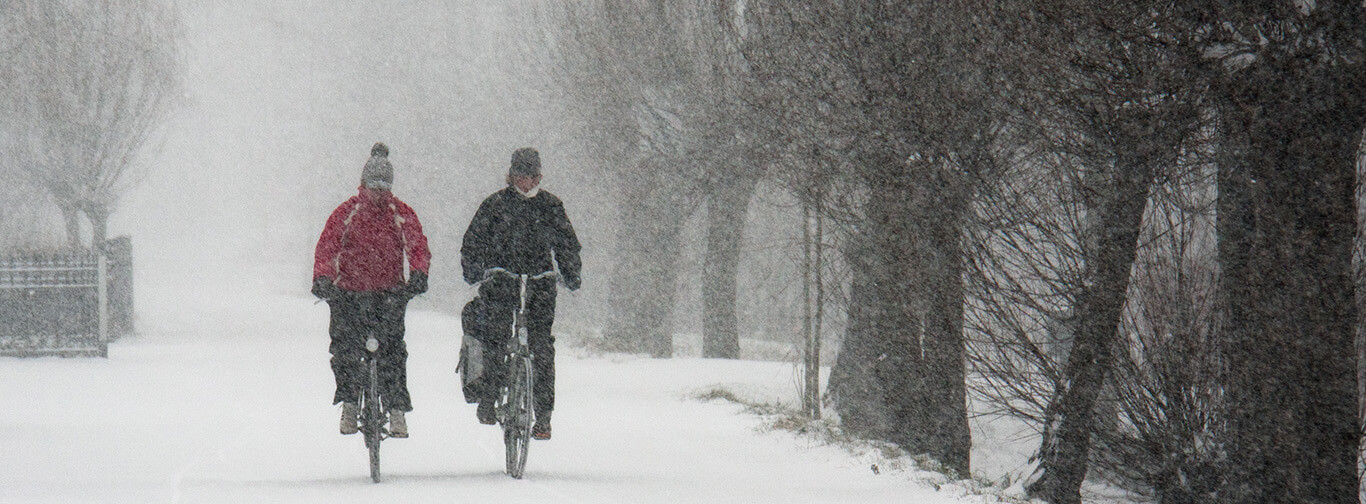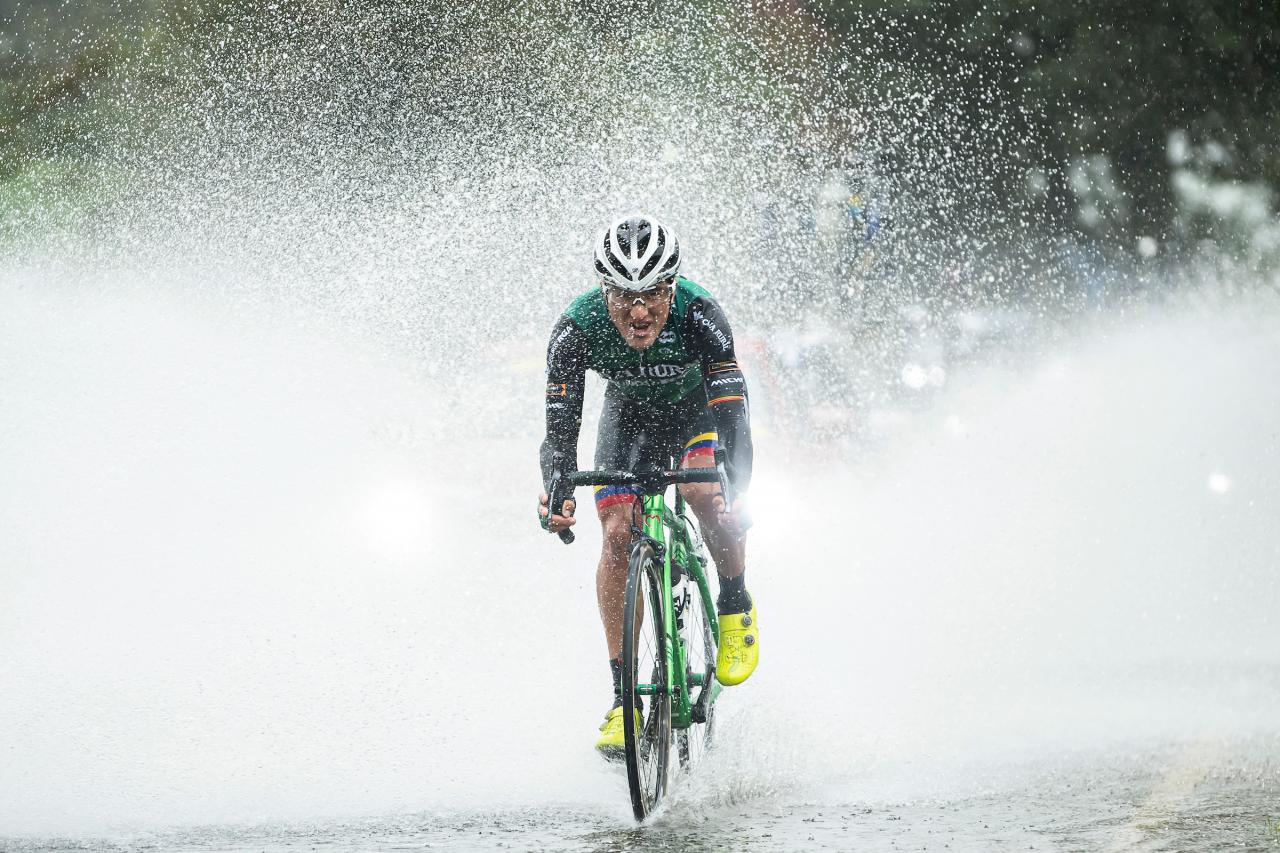More on Off Season Riding:

Bundle up for fall and winter commuting
Though chill winds are blowing from the Rockies to Rhode Island, bike-commuting season is just warming up. By outfitting yourself to stay warm and safe during winter rides, you can reap the physical, mental and environmental rewards of year-round commuting. With a little preparation and forethought, winter can be one of the best times of year for biking.
Starting out cold
Novices should ease in to cold weather riding. You shouldn't pick the coldest day of the year to start. Riding comfortably in the cold takes time and experience. Endurance comes from consistent riding. Of course, proper clothing is critical. We are glad to help you choose garments based on local weather, individual riding habits and level of acclimation.
Building from the base layers up
Layering is the golden rule for staying warm in the cold. But for novice commuters, selecting the right combination of base layers, tights, jackets, shoes and jackets can be daunting. Let us help you build a winter wardrobe from the base layers up.
Base layers are the most important apparel group for commuting. They keep the body’s core warm, which in turn helps warm the extremities. Good base layers are constructed with fibers that move—or wick—moisture away from the body.
Cotton is the classic bad material choice for base layers. While it is an excellent insulator when dry, it becomes a soggy, uncomfortable mess when wet, leaving a rider vulnerable to the “dreaded chill.” On the other hand, inexperienced riders tend to over layer their chest and core.
As a rule, if you start warm, you'll overheat while riding. It’s best to start out a little cold.
Gloves, mittens and more
During the brisk days of fall, almost any glove or mitten that keeps the digits dry and warm will do. However, when temps dip south of freezing, you need gloves with superior insulation and a windproof membrane to protect digits from frostbite. Thanks to advances in neoprene cycling gloves, it’s possible to get all the warmth of mittens without sacrificing dexterity for shifting and braking. Three-fingered lobster-style gloves also provide an ideal combination of agility and warmth. For severe cold, chemical hand warmers can provide hours of added protection.
Winter shoes and booties
Many commuters glide through the fall with little more than a pair of thick socks slipped in their summer riding shoes. As temperatures drop, you might add protection with toe covers or full neoprene booties. But for hard-core winter riding, winter riding boots are a necessity.
Jackets
Jackets are the first line of defense in protecting the body’s core. Minimally, a good jacket should break the wind, repel light precipitation and stow easily. Ideally, it is breathable, waterproof and durable. Winter rain jackets made with materials like Gore-Tex do well in cold wet coastal environments. Lightweight parkas with zip-out fleece liners are ideal for the drier cold of inland mountains and prairies. Zippers beneath the armpits help prevent over heating.
Tights
Cycling tights come in almost as many varieties as riders. Roadies often like tights with a built-in chamois. Depending on conditions, you might need added protection with wind or waterproof barriers.
Arm, Knee and Leg Warmers
Arm, knee and leg warmers add an extra layer of insulation to these vulnerable areas.
Hats
Most heat is lost through our heads. In the fall, a simple skullcap wicks perspiration and keeps the heat in. In temps 10°F and above, fleece helmet liners fit snugly beneath the helmet. For added protection, add a winter headband. In colder weather, balaclavas protect the entire face and neck.
Lights, Tires, Action! Outfitting Bikes for Winter
Add a set of lights and a pair of wider, thicker tires, fenders and most bikes are ready for cold-weather service. Even though winterizing is a fairly simple process, options vary depending on weather, terrain and type of riding.
Lights: See and Be Seen
Lights do two things: they make you visible to motorists and illuminate the path ahead. For a small investment, you can become shining beacons highly visible to motorists. You can set up with a super bright LED headlight and taillight set for under $50.00.
Compact mini headlamps provide high visibility and can generate huge volumes of light, some as much as 2,500 lumins. Constructed with bright LEDs, they take a beating and are virtually indestructible and most are USB chargable. Mini headlights and taillights offer the ultimate in lightweight and convenience. About the size of a wristwatch, they can strap on to the handlebars or seat post.
Tires: Fatten Up for Winter
You can encounter ice, snow, slush, watery run-off and dry pavement in the course of one commute. Under these conditions, wider tires with inverted tread patterns actually grip better than wide knobbies. For riders frequenting snow-packed trails, we recommend open tread with widely spaced lugs. These tend to shed snow better than tighter configurations. In most cases, studded tires are overkill. Unless you regularly traverse glacial ice slicks, studs will only slow you down when you hit pavement and dirt. They also wear out quickly once they're off the ice.
AND DON'T FORGET YOUR FENDERS!

